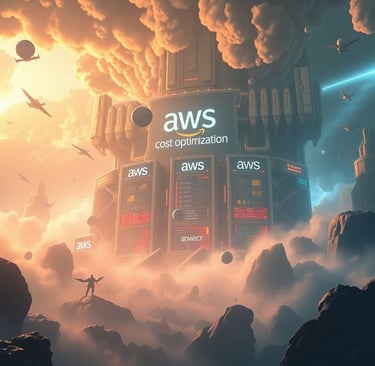Mastering AWS Cost Optimization
Blog post description.
AWSCLOUDCOSTOPTIMIZATIONFINOPSAWS-WELL-ARCHITECTED
5/4/20251 min read


Over the past few months, I have been delving deeper into AWS cost optimization strategies from the event I attended at AWS HQ in Madrid, Spain:
1️⃣ Cloud Intelligence Dashboards (CID):
These dashboards provide granular insights into cost and usage, helping organizations track KPIs, identify optimization opportunities, and align FinOps practices.
Tools like the Cost Intelligence Dashboard, CUDOS Dashboard, and Compute Optimizer Dashboard make it easier to visualize cost per environment, track savings plans, and monitor anomalies.
One of my favorite features? The ability to track Graviton opportunities and right-sizing recommendations in real-time.
2️⃣ Storage Cost Optimization:
Amazon EBS: Right-sizing volumes, migrating from io1/io2 to gp3, and leveraging Elastic Volumes can lead to significant savings.
Amazon S3: Using S3 Storage Lens and Lifecycle Policies to transition data to the most cost-effective storage class (e.g., S3 Glacier Instant Retrieval) can reduce costs by up to 70%.
Pro tip: Regularly review and delete unattached EBS volumes and obsolete snapshots to avoid unnecessary charges.
3️⃣ AWS Well-Architected - Cost Optimization Pillar:
The Frugal Architect mindset is key: design, measure, and optimize.
Best practices include:
Practicing Cloud Financial Management (CFM) to align finance and engineering teams.
Selecting cost-effective resources (e.g., Graviton instances, Spot Instances).
Optimizing over time by automating resource decommissioning and regularly reviewing workloads.
🔑 The Big Picture:
Cost optimization isn’t just about cutting costs—it’s about maximizing value while maintaining performance and scalability. By leveraging tools like Cloud Intelligence Dashboards, AWS Compute Optimizer, and Trusted Advisor, you can make data-driven decisions that align with your business goals.
